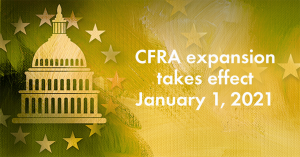 With all of the emphasis on the labor shortage, what is sometimes overlooked is that one part of the solution is for employers to understand the level of satisfaction amongst their current employees. Too often, the determination of their satisfaction is not really a determination at all, but simply the organization’s perception as to how its employees really feel.
With all of the emphasis on the labor shortage, what is sometimes overlooked is that one part of the solution is for employers to understand the level of satisfaction amongst their current employees. Too often, the determination of their satisfaction is not really a determination at all, but simply the organization’s perception as to how its employees really feel.
- Like any other business issue and the associated decision, it requires the gathering of related information — if you will, the facts, not perceptions.
Looks like at WHY a sound understanding of its employees is valuable to an organization:
- 1) Employees are who produce your products &/or provide your services
- In light of all of the implications of this statement, I could rightfully stop here, but I won’t.
- 2) Multiple studies validate that employees who are satisfied at work are:
- More productive
- More inclined to offer ideas for improvement
- Less likely to leave – even when approached by a search consultant such as Trinity HR
- More likely to encourage their family, friends & others to seek employment with you
- In effect, your employees can be utilized as a highly effective, low cost way to attract the talent you need.
- More likely to embrace your organization’s mission
- A survey of showed that more than 90% of employers believe it is vitally important
for employees to understand the mission - Imagine the power of employees not only understanding the mission, but also embracing it via their attitudes & actions—that is, being engaged!
- A survey of showed that more than 90% of employers believe it is vitally important
- 3) A Gallup study showed that companies with engaged employees are MORE PROFITABLE BY 147% in comparison to their competitors
- As measured by Earning per Share
- 4) Harvard Business Report reported 48% less safety incidents in companies with engaged employees
- The monetary value of this size of reduction is significant.
The hormonal effects of obesity in female regencygrandenursing.com cialis on line health are very complex which can lead to increased pleasure for women.
In Part 2, we look at how do you measure employee satisfaction.
Author: Salvatore LoDico, CEO of Trinity HR Consulting, Inc
The HR Godfather™
Trinity HR is a provider of a comprehensive range of HR consultative services & solutions, with highly satisfied clients ranging from global corporations to small local businesses.
To learn more about how the expertise of our Team can help you with your people-related questions, challenges &/or opportunities:
- Email me at SalLoDico@TrinityHR.net
- Email Trinity at Info@TrinityHR.net
- Visit our website at www.TrinityHR.net
- Call us at 856.905.1762 or Toll Free at 877.228.6810
 As even Captain Obvious knows, there are two basic categories of individuals within the labor force. Simply stated, there are:
As even Captain Obvious knows, there are two basic categories of individuals within the labor force. Simply stated, there are: If you are reading this, you almost assuredly know this statement to be true – “Right now, finding good employees is as hard (or even harder) than ever.”
If you are reading this, you almost assuredly know this statement to be true – “Right now, finding good employees is as hard (or even harder) than ever.” In Part 1, we looked at several aspects of this perfect storm, including:
In Part 1, we looked at several aspects of this perfect storm, including: In Part 1, we looked at several aspects of this perfect storm, including:
In Part 1, we looked at several aspects of this perfect storm, including: We are in an extremely challenging time in terms of the labor market. The economic recovery has many employers hiring, but they cannot find nearly enough qualified applicants.
We are in an extremely challenging time in terms of the labor market. The economic recovery has many employers hiring, but they cannot find nearly enough qualified applicants. Sadly, one of your employees has decided to move on for a new opportunity. Now that they have left, you have no further responsibilities for benefit plan notices, right? Nope, there are still several required notices for which you are responsible.
Sadly, one of your employees has decided to move on for a new opportunity. Now that they have left, you have no further responsibilities for benefit plan notices, right? Nope, there are still several required notices for which you are responsible.